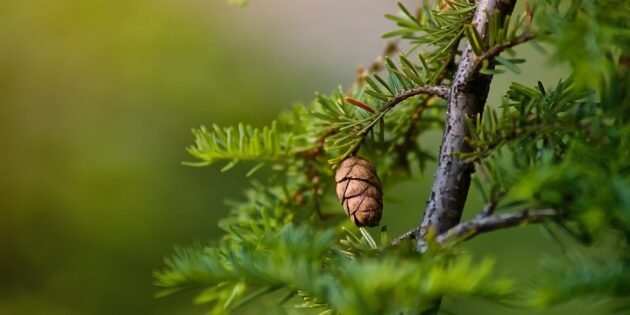When winter approaches, the leaves turn yellow, and then fall off. And the trees remain bare until it warms up again. But this does not happen to all of them. For example, firs, pines, firs, junipers and thuja do not bother with such conventions and needles are not dropped in any weather. Why? It's all about the differences in the arrangement of leaves and needles.
Both deciduous and coniferous plants live by photosynthesis. They get water from the ground with the help of roots, and catch sunlight J. E. Bidlack, S. Jansky, K. R. Stern. Stern’s Introductory Plant Biology leaves or needles. And the latter, in fact, are all the same leaves — only narrower and very tightly twisted.
Using the energy of the sun, plants convert water and carbon dioxide into various sugars and starch, which are then consumed.
In winter, the days are shorter, and plants get less sun than in summer. And the wide juicy leaves become vulnerable to the cold. They freeze, and because of them the plant loses precious water.
It becomes unprofitable for the tree to try to photosynthesize further and spend the accumulated sugar to maintain the life of the leaves. So it resets J. E. Bidlack, S. Jansky, K. R. Stern. Stern’s Introductory Plant Biology they go into hibernation in order to save as much nutrients as possible and last until spring, when there will be more sun and heat.

Coniferous trees also receive noticeably less energy for photosynthesis in winter. But their needles are resistant to cold. Firstly, the needles have a smaller area than the leaves, and secondly, they are covered with J. E. Bidlack, S. Jansky, K. R. Stern. Stern’s Introductory Plant Biology a special waxy coating that prevents moisture loss.
Therefore, fir trees and fir needles do not need to be dumped for the winter. Due to this, they are adapted to a wide range of temperatures and can grow both in a warm climate and in a very harsh one.
Nevertheless, it is wrong to say that conifers never drop needles at all, because they change them regularly. According to Pine, Fir or Spruce Tree? / Iowa State University of Science and Technology University of Iowa, needles can serve 1-3 years. In autumn, the old needles turn brown and brown and fall off, instead of them the trees are constantly growing new ones.
And the phrase "in winter and in summer the same color" is not quite correct, because spruce, pine, fir and thuja regularly change Fall needle drop: A natural phenomenon in conifers / MSU color every year, just sometimes the changes are noticeable, and sometimes not so much. Conifers can be bright or dark green, yellow and even brown.